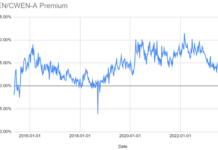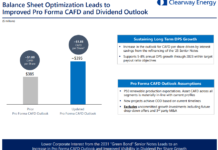 Sean Kidney
Sean Kidney
Last week we blogged that SolarCity (SCTY) and Credit Suisse were about to issue a new $54.4 million, climate bond – a rooftop solar lease securitization. It’s out: BBB+, 4.8%, 13 years. The long tenor is interesting – and great. And S&P’s BBB+ rating suggest those credit analysts may be beginning to understand solar.
This bond has been long-awaited by the green finance sector, who are hoping it’s the harbinger of things to come.
I did get the chance to look at the S&P opinion. Their rating reflected, as they put it, their views on over-collateralization (62% leverage; that’s how companies do credit enhancement), SolarCity’s track record and the credit quality of the household borrowers.
They also noted that “because this asset class has a limited operating history, we expect the rating to be constrained to low investment-grade for the near future”. Presumably that means we can expect better ratings five years away.
The asset-backed securities will be paid for with the cash flow from the SolarCity‘s rooftop solar leases. This allows SolarCity to raise fresh cash to do the next wave of deals; we think of this as supporting velocity in working capital.
I’m mentioning this because folks from the policy and carbon world sometimes feel a bit queasy about climate bonds backed by existing assets. “Shouldn’t we be focusing on new project finance”, they ask. No.
In the project space, as Citi’s Mike Eckhart is fond of reminding us, bonds only make up 5% of debt financing globally. Banks provide the rest – and that’s unlikely to change much.
The critical task for climate bonds is to re-finance – to provide an exit strategy for those folks who best understand project development risk: equity investors, energy corporates, and bank lenders. Once that project development risk has gone, climate bonds become the means to re-finance among the pension and insurance fund sector, whose risk appetite is much lower.
This is important for energy companies, allowing them to effectively offload “mature” assets (solar panels in place, leases signed, revenue flowing) and so quickly recycling capital into new projects.
It’s also vital for banks, struggling with recapitalisation pressures post-crash. If they can securitize their loan portfolios it will allow them to do more with their now reduced allocations to project lending.
It opens up a critical new financing option for companies, helping them grow faster. And boy do we need them to grow: if we’re to have a chance of avoiding climate change tipping points we need every low-carbon industry to grow at maximum rates.
SolarCity installs rooftop solar panels, typically at little or no cost to customers. The company owns the systems and its residential and commercial clients sign long-term agreements to buy the power.
Interestingly SolarCity‘s share price jumped 4.3% when the bond came out, making the largest US solar company by market cap. Confidence building? [Ed. Note: It should not be surprising that when a company gets access to a cheap new form of finance, it helps the stock.]
Sean Kidney is Chair of the Climate Bonds Initiative, an “investor-focused” not-for-profit promoting long-term debt models to fund a rapid, global transition to a low-carbon economy.








